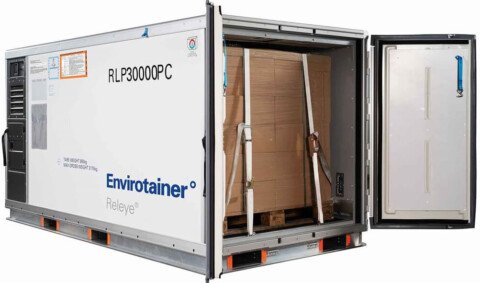COVID: a turning point for supply chain complexity?
SKU proliferation has become a fact of life for companies constantly looking for ways to improve market share by finding ever-more narrow market niches with personalisation, increases in package size options, line extensions, languages, or flavours.
Supply chain managers have struggled for years to bring attention to the costs of product complexity. All manner of activity-based costing, zero-based budgeting, and SKU profitability analysis usually results in simplicity programs that struggle to gain traction. This is because it is difficult to convince internal profit & loss (P&L) owners to forego real, tangible gross margins in exchange for indirect savings that are difficult to quantify.
But, at a minimum, the experience of companies that have successfully leveraged simplicity for market share and revenues during the pandemic will serve as a powerful argument in favor of at least some supply chain simplification.
No one would advocate that the egg or flour supply chains should relinquish the massive benefits of their dedicated supply chains. These efficiencies have enabled lower food prices enjoyed by millions of consumers. But the experience of Barilla and others shows that perhaps companies would be wise to understand that bringing complexity into supply chains does come with a very real cost, and the reasons for introducing inflexibility should be compelling and real, even if the economic equation can at times be difficult to quantify. Supply chain managers would be wise to consider citing these examples when faced with skepticism as to the cost of complexity and benefits of simplicity.
It will be interesting to see just how product portfolios evolve in the near future. Perhaps we can do more with less. Both from both a consumer and company point of view, COVID has helped prove the point.
Building business cases for Industry 4.0
Choosing a path through the myriad technologies that Industry 4.0 offers is hard enough, but with uncertainties generated by the pandemic, perhaps the universe of viable options has become smaller and more manageable, and the business cases clearer.
After the tumult of the spring and a rebalancing act in the summer, companies are now entering another stage of deep uncertainty brought about by the pandemic.
Without a confident view of future markets and margins, many companies are understandably scaling back their capital investments.
For supply chain managers looking to maintain the momentum of their Industry 4.0 efforts, or looking for how to get some in motion, there is room for building a compelling business case in spite of the pandemic.
Market opportunity analysis
These times are unprecedented for many reasons, one of which is the huge spikes in e-commerce demand.
In response, perhaps it would be helpful to start making a set of tools able to provide quick improvements in online experiences: investments in order management systems (OMS) that allow for integrated omni-channel capabilities, customer databases and order status; and automated customer ordering utilities are the sorts of initiatives that may get traction.
There have been some articles suggesting that now is the time to leverage Artificial Intelligence (AI) to improve demand planning. However, AI is most effective when there is a historical database to learn from and exploit, to better predict the future. It is hard to see how it would be easier to build consensus for AI-based forecasting right now.
For demand planning, the dominant uncertainty argues for better collaboration between functions to improve visibility into trade inventories and sell-out. When demand planning is difficult, demand sensing is even more critical. This thinking also bolsters arguments for investments in supply-chain control towers and transportation management systems — two other ways to improve visibility.
If we can’t reliably predict the future, quick decision making and reactivity is the best we can do.
Some companies leading the way in tackling supply challenges during the pandemic by simplifying their catalogues and removing complexity. This creates an opportunity for big data and advanced analytics to help identify those products that make the most sense to keep and focus on — and to do so by looking at products over their whole value chain.
Indeed, perhaps the collaboration success stories we have seen can be a springboard to true end-to-end Sales and Operations Planning; a fundamental practice needed for using AI in Demand Planning.
There has never been a more critical time to be able to do scenario planning (for example, high/low sales ranges or further lockdowns) that must consider customers, consumers, production capability and raw material supply.
Opportunities facing manufacturing
One of the key variables in choosing which products to focus on was the need to maximise the use of production assets. Larger runs and fewer changeovers were a priority. This will surely not remain the case forever. However, it does create conditions for more ROI-based Industry 4.0 initiatives that emphasise efficiency, such as automated guided vehicles, logistics automation and co-bots.
Initiatives that help keep machines running and have tangible benefits, such as predictive maintenance or AI vision recognition for quality assurance, are also good fits in the current moment.
These capabilities — given that they are more removed from the strategic business drivers of other Industry 4.0 technologies — offer another dimension of appeal. At some point, the pressures around supply-chain resiliency may lead to tangible incentives designed to push companies to onshore production. Capital investments that lower operating costs will be particularly attractive, and those companies that have always moved in this direction will be better positioned to act quickly and reconfigure their supply chains.
Another day at the grindstone
With e-commerce and market uncertainties currently at the forefront of supply chain executives’ minds, now may not be the ideal moment for most companies to exercise ambitious strategic capabilities. For example, making the case for initiatives like product personalisation is more challenging in the current moment of catalogue decomplexifying and demand questions.
In the same vein, network-scale initiatives such as Blockchain traceability or 3D printing fat-tail products are likely not going to be targets for investment.
At the factory level, augmented reality maintenance tools or digital twins could well prove to be the sort of initiatives better suited to capital investment when the horizon is clearer and confidence is higher.
Making the case for Industry 4.0 initiatives is already a fraught exercise of blending business drivers, building business cases and managing change. In a time when uncertainty rules, change is even scarier and capital investments harder to come by. But perhaps there is a way to continue forging ahead by being opportunistic and leveraging the constraints of the pandemic into new capabilities.







